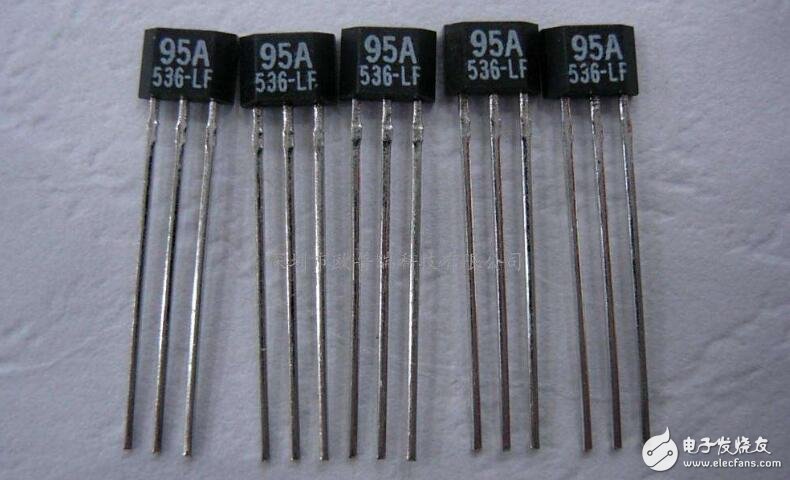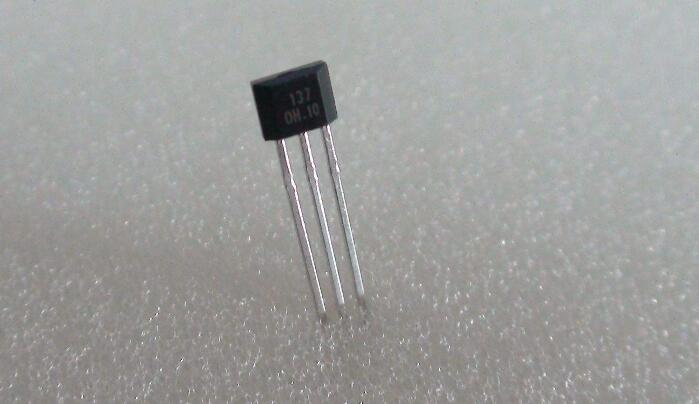Hall element working principle video
The Hall element is a semiconductor to which the Hall effect is applied. It is generally used to determine the rotor speed in a motor, such as the drum of a video recorder, a cooling fan in a computer, etc.; it is a magnetic sensor based on the Hall effect, which has developed into a diverse family of magnetic sensor products, and has been widely used application.
Hall element classificationAccording to the function of the Hall element, they can be divided into: Hall linear device and Hall switch device. The former outputs analog quantities, and the latter outputs digital quantities.
According to the nature of the detected objects, their applications can be divided into direct applications and indirect applications. The former is to directly detect the magnetic field or magnetic properties of the object to be inspected, and the latter is to detect the artificially set magnetic field on the object to be inspected. This magnetic field is used as the carrier of the detected information. Through it, many non-electric and non-magnetic The physical quantities such as force, torque, pressure, stress, position, displacement, speed, acceleration, angle, angular velocity, revolutions, rotation speed, and the time when the working state changes, etc., are converted into electricity for detection and control.

The Hall element uses a Hall effect semiconductor.
The so-called Hall effect refers to a physical phenomenon in which a lateral potential difference is generated when a magnetic field acts on current-carrying metal conductors and carriers in semiconductors. The Hall effect of metals was discovered by American physicist Hall in 1879. When the current passes through the metal foil, if a magnetic field is applied in a direction perpendicular to the current, a lateral potential difference will appear on both sides of the metal foil. The Hall effect in semiconductors is more pronounced than in metal foils, and ferromagnetic metals will exhibit extremely strong Hall effects below the Curie temperature.
A variety of sensors can be designed using the Hall effect. The basic relationship of the Hall potential difference UH is:
UH=RHIB/d (1) RH=1/nq (metal) (2)
Where RH――Hall coefficient; n――number of carriers or free electrons per unit volume; q――electron charge; I――current passing; B――magnetic induction intensity perpendicular to I; d― ―The thickness of the conductor.
For semiconductors and ferromagnetic metals, the Hall coefficient expression is different from equation (2).
Since there is a magnetic field around the energized wire, its size is proportional to the current in the wire, so the magnetic field can be measured by the Hall element to determine the size of the wire current. Using this principle, a Hall current sensor can be designed. Its advantage is that it does not make electrical contact with the circuit under test, does not affect the circuit under test, and does not consume the power of the power supply under test. It is especially suitable for high current sensing.
If the Hall element is placed in an electromagnetic field with an electric field strength of E and a magnetic field strength of H, a current I will be generated in the element, and the Hall potential difference generated on the element at the same time is proportional to the electric field strength E. The magnetic field strength of the electromagnetic field, the instantaneous value P of the power density of the electromagnetic field can be determined by P=EH.
This method can be used to form a Hall power sensor.
If the integrated switch of the Hall element is regularly arranged on the object according to the predetermined position, when the permanent magnet mounted on the moving object passes through it, the pulse signal can be measured from the measurement circuit. According to the pulse signal train, the displacement of the moving object can be sensed. If the number of pulses emitted per unit time is measured, the movement speed can be determined.

The Hall element is a magnetic sensor. They can be used to detect the magnetic field and its changes, and can be used in various applications related to the magnetic field.
Application of linear Hall element:1. The application of mathematical operators: multiplication, division, reciprocal circuit, square root circuit
2. Current measurement application: DC current and AC current measurement
3. Application of voltage measurement: DC voltage and AC voltage measurement
4. Application of power measurement: measurement of DC power and AC power
5. Application of power factor measurement
6. Magnetic field measurement: measurement of DC magnetic field and AC magnetic field
7. The measurement of the number of turns of the coil: the measurement of the number of turns of the Hall zero detection type coil and the measurement of the number of turns of the Hall direct detection type coil
8. Application in asynchronous motor parameters
9. Measurement of coercivity of magnetic materials: measuring magnetic coercivity and measuring the hardness of mechanical parts
Bus Copper Strip Machine,Interconnection Copper Strip Equipment,Photovoltaic Copper Strip Annealing Equipment,Copper Strip Corrosiveness Laboratory Equipment
Jiangsu Lanhui Intelligent Equipment Technology Co., Ltd , https://www.lanhuisolar.com